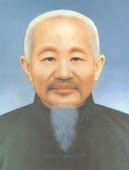Reincarnation
* See Names and Places at the end of this volume for further information.
belief that a person's soul continues to exist after death and can transmigrate, or move, to another living thing.
Belief in reincarnation has been shared by a wide variety of peoples, including the ancient Egyptians and Greeks and the Aboriginal people of central Australia. The most complex and influential ideas about reincarnation are found in Asian religions, particularly Hinduism and Buddhism.
Beliefs About Reincarnation. Cultural groups that believe in reincarnation have different ideas about the way it takes place. Some say that human souls come from a general source of life-giving energy. Others claim that particular individuals are repeatedly reborn or come back to life in their descendants.
In Australia, most Aborigines believe that human souls come from spirits left behind by ancestral beings who roamed the earth during a mythical period called Dreamtime. The birth of a child is caused by an ancestral spirit entering a woman's body. The spirit waits in a sacred place for the woman to pass by. After death, the person's spirit returns to the ancestral powers.
According to traditional African belief, the souls or spirits of recently dead people linger near the grave for a time, seeking other bodies—reptile, mammal, bird, or human—to inhabit. Many African traditions link reincarnation to the worship of ancestors, who may be reborn as their own descendants or as animals associated with their clans or groups. The Zulu people of southern Africa believe that a person's soul is reborn many times in the bodies of different animals, ranging in size from tiny insects to large elephants, before being born as a human again. The Yoruba and Edo of western Africa share the widely held notion that people are the reincarnations of their ancestors. They call boys "Father Has Returned" and girls "Mother Has Returned."
Reincarnation plays a central role in Buddhism and Hinduism. It also appears in Jainism and Sikhism, two faiths that grew out of Hinduism and are still practiced in India. Jainism shares with Hinduism a belief in many gods. Sikhism, a monotheistic religion, combines some elements of Islam with Hinduism.
Hinduism, Buddhism, Jainism, and Sikhism all began in India, where the idea of rebirth first appears in texts dating from about 700 B.C. They share a belief in samsara—the wheel of birth and rebirth—and karma—the idea that an individual's future incarnation depends on the way he or she lived. People who have done good deeds and led moral lives are reborn into higher social classes; those who have not are doomed to return as members of the lower classes or as animals. Only by achieving the highest state of spiritual development can a person escape samsara altogether.
A Very Long Journey
The Greek historian Herodotus recorded ancient Egyptian ideas about reincarnation. The Egyptians, he wrote, believed that the soul passed through a variety of species—animals, marine life, and birds—before once again becoming a human. The entire journey, from death of a human to rebirth as a human again, took 3,000 years. One ancient Egyptian source, the Book of Going Forth by Day, partly supports Herodotus's account. It states that the souls of important individuals can return to earth in the form of creatures such as the heron or crocodile.monotheistic believing in only one god
incarnation appearance of a god, spirit, or soul in earthly form
Myths and Legends of Reincarnation. Many world myths and legends feature some form of reincarnation. Ancient Norse* kings were regarded as reincarnations of the god Freyr. After the introduction of Christianity to Norway, some people believed the Christian king Saint Olaf was the reincarnation of an earlier pagan king, also named Olaf.
In the Arctic regions, where animals are critical to survival, the Inuit people believe that animals as well as humans have souls that are reborn. Hunters must perform ceremonies for the creatures they kill so that the animal spirits can be reborn and hunted in the future. When a person dies, part of his or her soul will be incarnated in the next baby born into the community. Giving the newborn the dead person's name ensures that the child will have some of the ancestor's qualities.
Buddhist tradition includes a set of tales called the Jatakas that are based on reincarnation. They tell of Gautama Buddha's various lives and how he grew wiser and more holy as his soul transmigrated from life to life. In one incarnation Buddha was a hare who sought spiritual growth through fasting. He realized that if a beggar appeared he would have no food to offer, so he decided that he would offer his own flesh. One of the gods came down from heaven and visited the hare in the form of a beggar. The hare willingly hurled himself into a fire to provide a meal for his guest, but the god then saved the hare and painted his image on the moon to honor his spirit of self-sacrifice. On his way to becoming Buddha, Gautama passed through more than 500 lives that included incarnations as an elephant, a priest, a prince, and a hermit.
pagan term used by early Christians to describe non-Christians and non-Christian beliefs
The Japanese legend of O-Tei illustrates the haunting appeal of the idea of reincarnation. O-Tei was a young girl engaged to be married. She fell ill, and as she lay dying she promised her future husband that she would come back in a healthier body. She died, and the young man wrote a promise to marry her if she ever returned.
Reincarnation plays a central role in Hinduism. People who have performed good deeds and led moral lives are reborn into higher social classes; those who have failed in these areas are doomed to return as members of the lower classes or as animals. This carving of two men with a wheel represents the cycle of birth and rebirth.









